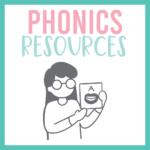
Incorporating games is a great way to practice, review, and strengthen skills for different math standards. In first grade, students are still learning to play games fairly and effectively. These place value games are a twist on traditional partner games and are games for students to play alone.
Why use independent games? Independent games still allow students to play a game format, but they are also focused on their own skills rather than what their partner is doing. There’s no competition and students are doing what they need to do – strengthening their skills.
Counting And Identifying Hundreds, Tens, And Ones

The place value games are aligned to the first grade math standards for place value. One standard states students should be able to understand that the two digits of a two-digit number represent amounts of tens and ones. There are a handful of games that require students to count tens, count tens and ones, and extension activities to count hundreds, tens, and ones. The games include for students to count the place value blocks and find the number and vice versa.
Add And Subtract Multiples Of Ten

One of the first grade math standards is to understand how to add and subtract multiples of ten to a 2-digit number. The two standards state that given a two-digit number, mentally find 10 more or 10 less than the number, without having to count and subtract multiples of 10 in the range 10-90 from multiples of 10 in the range 10-90. This concept can be tricky for students. Playing these games reinforces the concept and gives them ample opportunity to work on the standard in a relaxed setting.
Comparing Numbers With Greater Than And Less Than

A few of the games are designed to help students understand the concept of greater than and less than with place value. The first grade standard is to compare two 2-digit numbers based on meanings of tens and ones digits, recording the results of comparisons with symbols >, =, and <.
Place Value Games

Ready to try our place value math games?
Click here to see them on TPT.
Click here to see them on our website.
Related Posts:












